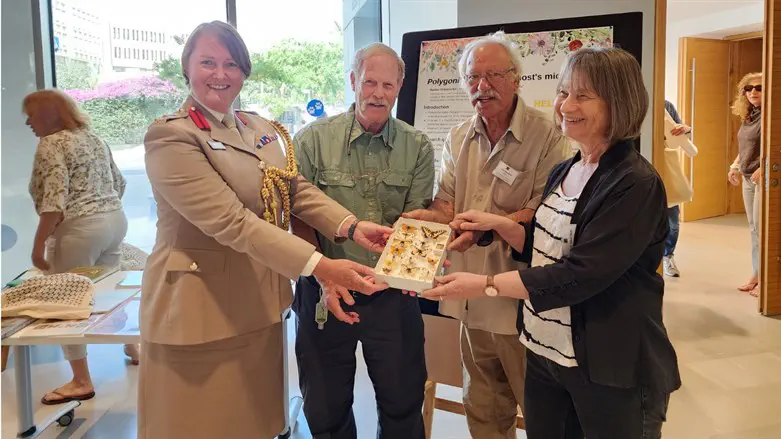
On the occasion of the Fourth International Congress of Middle Eastern Butterflies (held on June 1st) that was led by the Israel Lepidopterists Society at the Steinhardt Museum of Natural History, Tel Aviv University - an award was made to the Steinhardt Museum by Oxford University Natural History Museum.
A box of Tristram-Cambridge butterflies collected in Ottoman Palestine (Israel) during 1863-1865 has been donated to the national collections of the Steinhardt Museum in Tel Aviv.
The 160-year-old butterfly box, whose items were collected by the Anglican Church's delegations to the Holy Land, were presented by Col. Joe Burgon, the military attaché of the British Embassy in Israel, and Dubi Binyamini, President of Israel Lepidopterists Society, to Prof. Tamar Dayan, Chair of the Steinhardt Museum of Natural History, Tel Aviv University.
The historic butterflies were collected during the period of Ottoman rule in Israel by two delegations of the Anglican Church: one led by Henry Baker Tristram and the other led by Octavius Picard-Cambridge. The specimens were kept in Oxford University’s Natural History Museum, and were discovered by Dubi Binyamini, President of the Butterfly Association in Israel, which is celebrating its 40th anniversary this year.
Binyamini visited the museum in Oxford in order to review particularly large butterflies of the Archon Apollinus (or False Apollo) type, which he saw around Beer Sheva.
This species of butterflies were mentioned as butterflies collected in the southern Gaza Strip on the Sinai border In the essay by Major Graves published in 1925 about butterflies of Israel and Jordan, which contains a detailed list of 80 species of butterflies, collected by 14 entomologists, most of them officers in the service of the British Mandate that ruled Israel at the time.
Binyamini says that during his visit to the Oxford University Natural History Museum, he saw a strange note on one of the items: "Tristram-Cambridge 1863 - 1865". In checking with the curator of the museum's collections, Dr. James Hogan, he found out that in the 19th century there were two expeditions of the Anglican Church to the Holy Land, which collected a variety of local animals (they concentrated on birds, mollusks and spiders) including some butterflies that were kept in the museum in Oxford, but until Binyamini's visit to the museum, no one noticed this treasure. Following the find, he began to check the details in the British collection and in 4 more visits he was able to locate in the museum's collections a total of 113 specimens representing 51 butterfly species. At the end of his research, Binyamini turned to the museum management in Oxford and asked them to donate one of the boxes of the Tristram-Cambridge collection to the Steinhardt Museum of Natural History - and so it happened.
